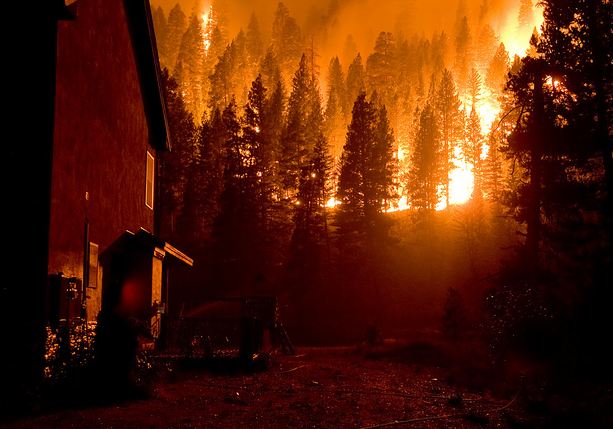Idaho Governor has recommendations on how to reduce damage from wildfires
The Governor of Idaho, C.L. “Butch” Otter, in an opinion article published under his name, has some recommendations about how to reduce the adverse impacts from wildfires. They include more roads, grazing, and logging.
Smoke from Idaho’s Mustang Fire had elevated levels of radiation
The Idaho Department of Environmental Quality tested the air quality near the Mustang Fire and said that even though they found “definitely elevated” levels of radiation, it did not pose a risk to human health. The air samples were obtained in the nearby town of North Fork. As Wildfire Today told you on September 21, the fire burned through four former mining sites that had traces of radioactive uranium and thorium.
The Chicago Tribune reports:
…Paul Ritter, health physicist with the state environmental agency, said in the area of the mining sites, smoke from the fire showed amounts of radiation roughly equivalent to emissions from a fire in 2000 that charred parts of Los Alamos National Laboratory, the nuclear weapons design facility in New Mexico.
“The readings are definitely elevated but not out of line with what has been measured in fires before. It is not a risk,” he said.
Americans are exposed to an estimated 310 millirems of radiation a year from natural sources, including some rocks and soils, according to the U.S. Nuclear Regulatory Commission.
An analysis of air samples in North Fork showed residents would have been exposed to 0.5 millirems of radiation in a 30-day period. That compares to a dose of 5 millirems delivered by a round-trip transcontinental flight, Ritter said.
Utah students influence legislation about wildfires
Some high school students in Utah who were interested in the effects of climate change talked to state Representative Kraig Powell, who, according to a report in Power Engineering:
…has opened a bill file for legislation that would examine how climate change is expected to drive more and bigger wildfires and to begin planning for future wildfire fighting and suppression costs.
In early meetings with Powell, [the students] shared some of what they had learned about wildfire in Utah. For instance, they told how the state already has seen 400,000 acres burned this year with suppression costs of $47.1 million — part of a trend prompted by record hot and dry periods.
They also told how rehabilitating burned areas often costs more than fighting the wildfire itself. Their example? The 2007 Milford Flat fire which racked up a $5 million bill for suppression, while rehabilitating the scarred forest and range cost $17 million.
That’s what led to the concept for the bill, which is currently being drafted by the Legislature’s lawyers.
“I’ve been learning a lot,” Powell said. “It’s not a simple science.”
Meth production may have caused brush fire
Michigan State Police are investigating a small wildfire that may have originated from an attempt to cook meth in Marquette Township.









